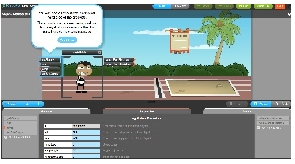
Education company Pearson aims to help develop a generation of young coders through its application iCreate.
Currently a prototype, iCreate allows children between the ages of seven and 11 to learn code by controlling a character's actions. For example, children can control a long jumper by inputting code to make him jump higher, faster and farther.
The web-based app, borne out of a 20-hour hack session, was created with close guidance from Pearson’s ICT subject advisor Gareth Byrne.
Designed to fit in with the new Computer Science curriculum, due to roll out in schools in 2014, iCreate focuses on coding and creating, a move away from the previous ICT curriculum which mostly focused on how to use desktop software.
Pearson's head of future technologies, Diana Stepner, told Computer Weekly that iCreate is a great opportunity to get children working with code and seeing the effect it has first-hand.
When children are at the age where they are learning to speak, they should learn to code too
Diana Stepner, head of future technologies, Pearson
“The children can change the code themselves and see how that affects the character. They can change different attributes of the character through a user interface or HTML code,” she said.
“There are a variety of education applications out there, such as Scratch. That is more of a drag-and-drop application though. iCreate is about learning to code. When children are at the age where they are learning to speak, they should learn to code too,” added Stepner.
To further encourage programming among young people, Pearson sponsored the Young Rewired State, which brings young coders together for a week of learning and competition.
iCreate was showcased at the Young Rewired State competition recently. “This was great timing, as there were lots of students available to test iCreate and give feedback,” added Stepner.
Pearson’s future technologies team focuses six to 12 months into the future to create potential opportunities for technology in education. Part of this includes creating prototypes.





